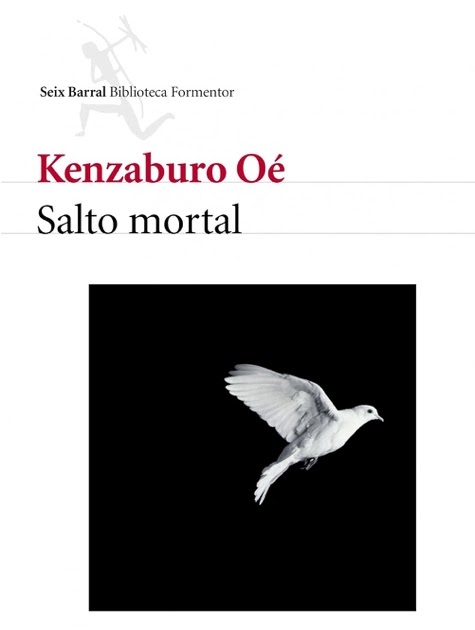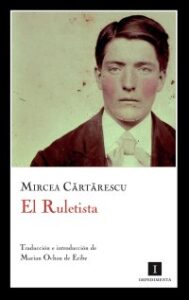
Original language: japanese
Original title: Chuugaeri (somersault)
Translation: Fernando Rodríguez-Izquierdo
Year of publication: 1999
Valuation: recommendable
In March of last year, the Nobel Prize winner Kenzaburo Oe died, and I was not even aware of it, despite living in Japan. I was surprised to see a new edition of his complete works in bookstores, and… that’s it. So it didn’t occur to me that it was in honor of his death. If it had been Murakami (Haruki, not the other one) who died, I don’t doubt that there would have been a big uproar. I suppose that this discreet reaction towards Oe is due to certain positions that he maintained, which may not be very celebrated in Japanese society: his refusal to recognize the authority of the emperor, his antagonism towards the presence of the American army in Japanese territory, and (most unforgivable) gossip about his ties to Chinese leaders. Once I had overcome the confusion over Oe’s death, I was happy to see the first novel he wrote after receiving the Nobel republished in hardcover (I think it is important to mention this detail due to how ugly the works tend to be in the immediate post-Nobel period). , “Leap Mortal”.
Originally published in 1999, at a time marked by paranoia after the attacks on the Tokyo subway by the Aum Shinrikyo sect (an event that altered such everyday aspects as the removal of trash cans from the stations), “Leap Mortal” offers a different perspective on the rise and radicalization of religious movements in late 20th century Japan. Oe aims to intertwine the personal with the political, creating a narrative where the figure of the charismatic leader becomes the central axis. “Leap Mortal” revolves around two religious leaders, Patron and Guider (Savior and Prophet, for fans) who, after abjuring their own doctrine and a decade of silence, decide to rebuild their movement. These characters exert an intense influence on their followers, resonating with the dynamics of Aum Shinrikyo under Shoko Asahara, who, by the way, was executed after spending almost 20 years in prison.
Despite the obvious parallels, “Leap Mortal” transcends a mere representation of Aum Shinrikyo. In contrast to other works on the subject that openly condemn these sects, such as “Underground” By Murakami, Oe uses fiction to investigate issues of faith, morality and also gives us a vision about the organization and methods used by this type of cults to increase a flock, such as subtle brainwashing. At times, the novel challenges the reader to discern between irony and an apparent apology for this fanaticism, especially when delving into the crisis of faith and the internal conflicts that motivate followers, mainly disenchanted young people without a promising future, to join to the fashionable apocalyptic cult. The complexity of “Leap Mortal” lies in its ability to weave these elements into a narrative that is both provocative and introspective.
The biggest criticism of the novel is its slow pace, with less emphasis on action and more on introspection and character development. Very faithful to his style, Oe often presents situations and moral dilemmas without clear or defined solutions. Reiteration of ideas without fully delving into them can make reading tedious. A little patience is required to enjoy this novel, somewhat hidden between dialogues that many could describe as unnecessary.
This book is particularly recommended for admirers of Kenzaburo Oe’s work and, in a broader sense, for those who appreciate modern Japanese fiction, which is distinguished by the exploration of the psychology and emotions of the characters, conveyed through a minimalist style and emphasizing subtlety and insinuation. For those who don’t, “Leap Mortal” It can become boring and redundant.
Signed: Alain Ríos
Other works by Kenzaburo Oé reviewed in ULAD: here
Source: https://unlibroaldia.blogspot.com/2024/01/colaboracion-salto-mortal-de-kenzaburo.html


